Unveiling Niacinamide: Benefits, Formulation, and Skincare Options
This post may contain affiliate links. That means that if you click on a link and purchase something I recommend, I will receive a small commission at no extra cost to you. As an Amazon Associate, I earn from qualifying purchases. This helps keep my website up and running and is very appreciated. Thank you for your support! Disclaimer
Today, we are going to do a deep dive into niacinamide. Why niacinamide? Well, it seems to have got a new PR agent and gained a lot of attention in recent years, from 2020 up to now in 2024.
But let’s be clear, niacinamide isn’t some new kid on the block. It’s been around for ages. that’s why I find it fascinating how people bring it up like, “I have discovered a secret, and my secret is niacinamide,” as if it was like some sort of one-night sensation.
Niacinamide has been around for a very long time, since the inception of time actually, and we have known about its benefits for several decades. In the past years, it came back to light, and the question then becomes: does it have merit? Is it worth it?
In the beauty world, ingredients tend to cycle in and out of popularity. Remember when everyone was talking about hyaluronic acid? (which I hope people are finally realizing is not worth all the buzz) Now, it’s niacinamide’s time in the spotlight. So, I figured why don’t we do a deep dive into niacinamide, understanding what it is? what it does? who it helps? what it’s used for? and how to choose the right product with the right concentration.
If you don’t have time to read this post right now, why not save it for later?
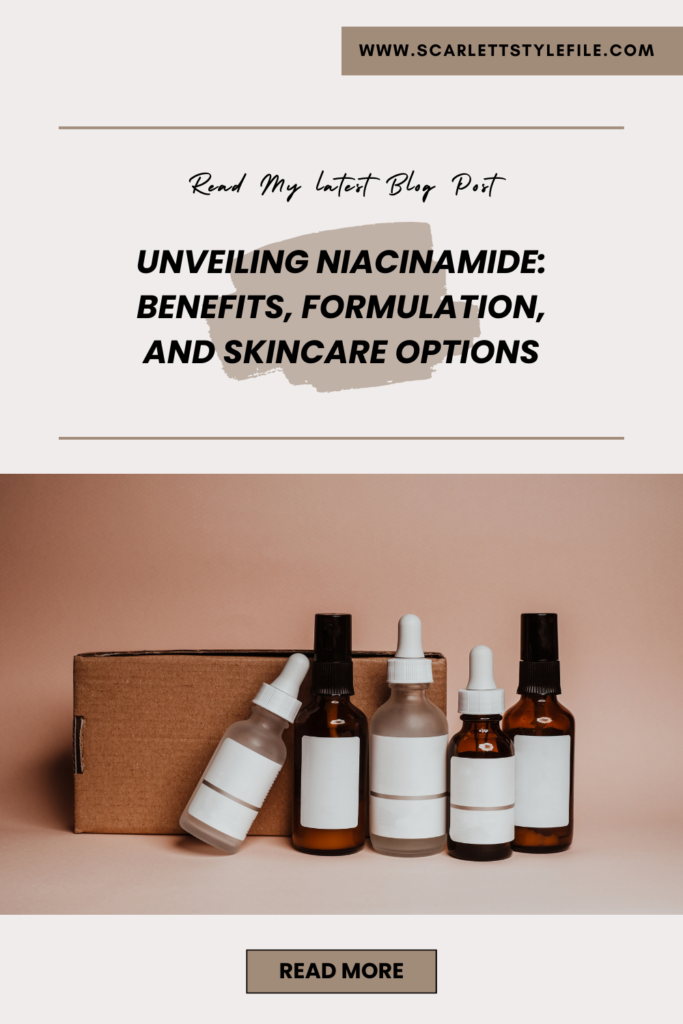
What is Niacinamide?
Niacinamide, also called vitamin B3, is a type of water-soluble vitamin that our bodies don’t naturally produce. Instead, we need to get it from our diet, mainly from foods like vegetables, nuts, meats, poultry, and fish. Luckily, if you live in the US , UK , some European countries niacinamide deficiency is pretty rare in “developed countries” because we usually get enough of it from our food. However, if someone doesn’t have enough vitamin B3, you can develop a condition called pellagra.
Pellagra causes specific skin lesions, severe diarrhea, anemia, sun sensitivity, and headaches. To treat pellagra, people usually take niacin pills, also known as nicotinic acid. but the issue with these pills is that it causes intense flushing; you will look like a tomato, making your skin turn red .
Niacinamide, also known as nicotinamide, is like a sibling to niacin. It doesn’t cause flushing and can be a gentler option for getting enough vitamin B3.
Let’s zoom in on niacinamide because it’s all the rage in skincare these days. This ingredient has become super popular, thanks to some serious PR efforts in the beauty industry. One of the best things about niacinamide is that it won’t make your face turn red, which is a win. When taken orally, it’s also effective in treating pellagra without the unpleasant side effects. When applied on the skin, niacinamide can do a bunch of cool stuff.
So yes, it is worth its hype to a certain extent. And why do I say to a certain extent? Because people always have this tendency to think that more is always better. But just like how eating a whole tub of Nutella might feel great in the moment but leaves you feeling awful afterward, slathering on super high concentrations of niacinamide isn’t necessarily a good idea.
It’s all about finding the right balance
what are the benefits of niacinamide:
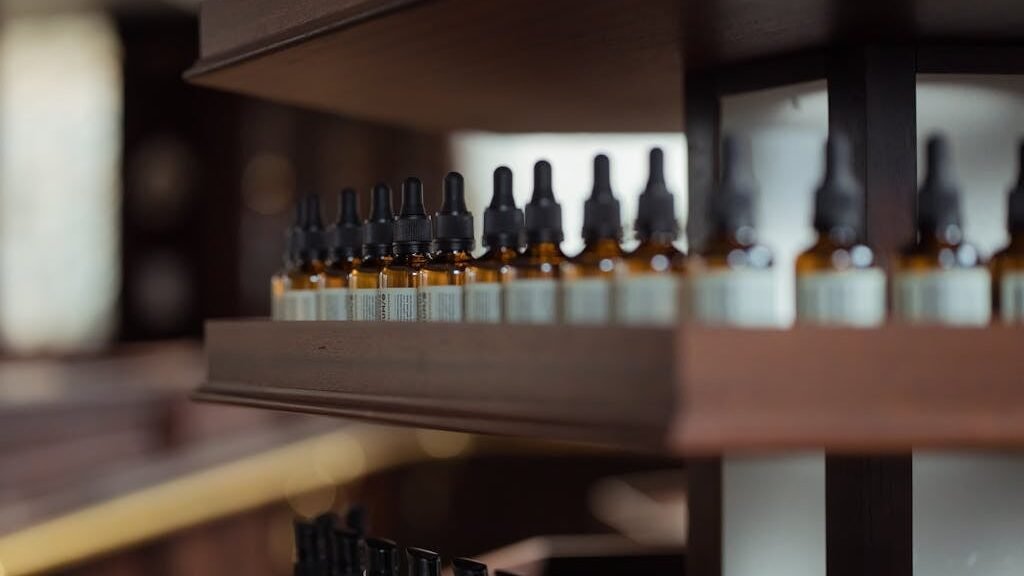
So, what are the benefits of niacinamide?
Firstly, it increases your skin’s immunity. How does it achieve this? By boosting keratin production and maintaining the integrity of the skin barrier. Your skin acts as your body’s largest organ, and when it’s compromised, whether on a microscopic or macroscopic level (like an open wound), you become more susceptible to infections, cuts, nicks, eczema flare-ups, and more. By ensuring your skin remains intact and well-connected, niacinamide enhances its immune function, providing better protection.
Secondly, niacinamide aids in strengthening the lipid barrier of your skin. It promotes ceramide production, which acts as the “cement” holding your skin cells together. This helps maintain firmness, suppleness, and moisture. By retaining moisture, niacinamide can alleviate conditions like eczema, where moisture loss exacerbates symptoms and leads to a vicious cycle of cracking skin and infection.
Thirdly, niacinamide has anti-inflammatory properties, which can reduce redness, particularly in people with inflammatory acne. It also regulates oil production, making it beneficial for those with oily skin by preventing excessive oiliness throughout the day.
If it were a horoscope sign, niacinamide would be a Libra because it’s all about being friendly and getting along with others. It doesn’t clash with other ingredients; instead, it enhances their effectiveness. Think of it as the steady companion saying, “Hey, vitamin C, let’s make your skin benefits even better.” That’s the magic of niacinamide – reliable and always striving to bring out the best in your skincare routine. So, if skincare ingredients had zodiac signs, niacinamide would definitely be a Libra (I love Libras; my fiancé is a Libra, hey Mark!)
how to choose the right concentration?
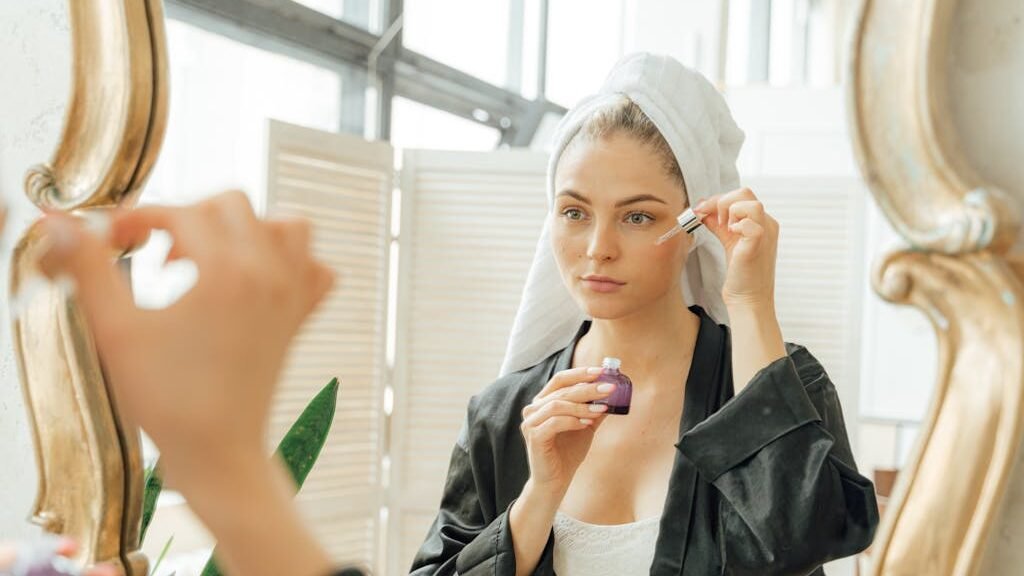
Over the years, several studies have been conducted. One was published in the International Journal of Dermatology in 2013, and another in 1995. These were double-blinded studies, considered the gold standard in research because people don’t have any bias errors, usually for the most part. They showed that using four percent of niacinamide twice a day was as effective as applying topical antibiotics like clindamycin. Additionally, using two percent niacinamide . on its own, decrease oil production.
Let’s break it down: There’s a big misconception out there that more is always better when it comes to skincare. But let me be clear: that’s not the case. Some folks seem to think they’re experts in chemistry just because they can recognize a fancy-sounding ingredient like “22%niacinamide.” But let me tell you, slapping on a product with such a high concentration can seriously backfire. It might seem like it’ll work wonders, but in reality, it can actually irritate your skin and make things worse. So, instead of going all out with super strong formulas, it’s better to stick to gentler options that won’t leave your face feeling like it’s about to explode.
This is where I have issues with certain brands that are ingredient-driven. They highlight the ingredient rather than act like a chef to formulate the various ingredients into a beautiful recipe, making the consumer (you and me) believe that more is better because it’s not. Anything above five percent, in general, is probably overkill, and I have seen it now more often than not where higher levels of niacinamide can cause inflammation, irritation, and breakouts—which are the opposite of what it’s meant to help with.
Ultimately, it’s all about the right dosage. Using too much of a good thing can be harmful. Don’t fall into the trap of assuming that a higher percentage automatically equals better results. It’s not just about the quantity but also about how the product is formulated and what other ingredients it’s combined with.
Best Products with niacinamide:
Starting with the more affordable options, you might be tempted to think, “Hey, they’re cheap, why not give them a try?” It’s easy to shrug off a few bucks, but be cautious. While some people love these products, and it’s not a knock against the brands, there are concerns. These brands have made significant contributions to the beauty industry, but what bothers me is that they often emphasize high percentages, which isn’t always better. So, just a heads up.
Take, for example, The Inkey List’s niacinamide serum priced at $6. It also contains hyaluronic acid, which might seem like a good combo. However, using too much niacinamide, especially alongside other serums with hyaluronic acid, can be problematic.
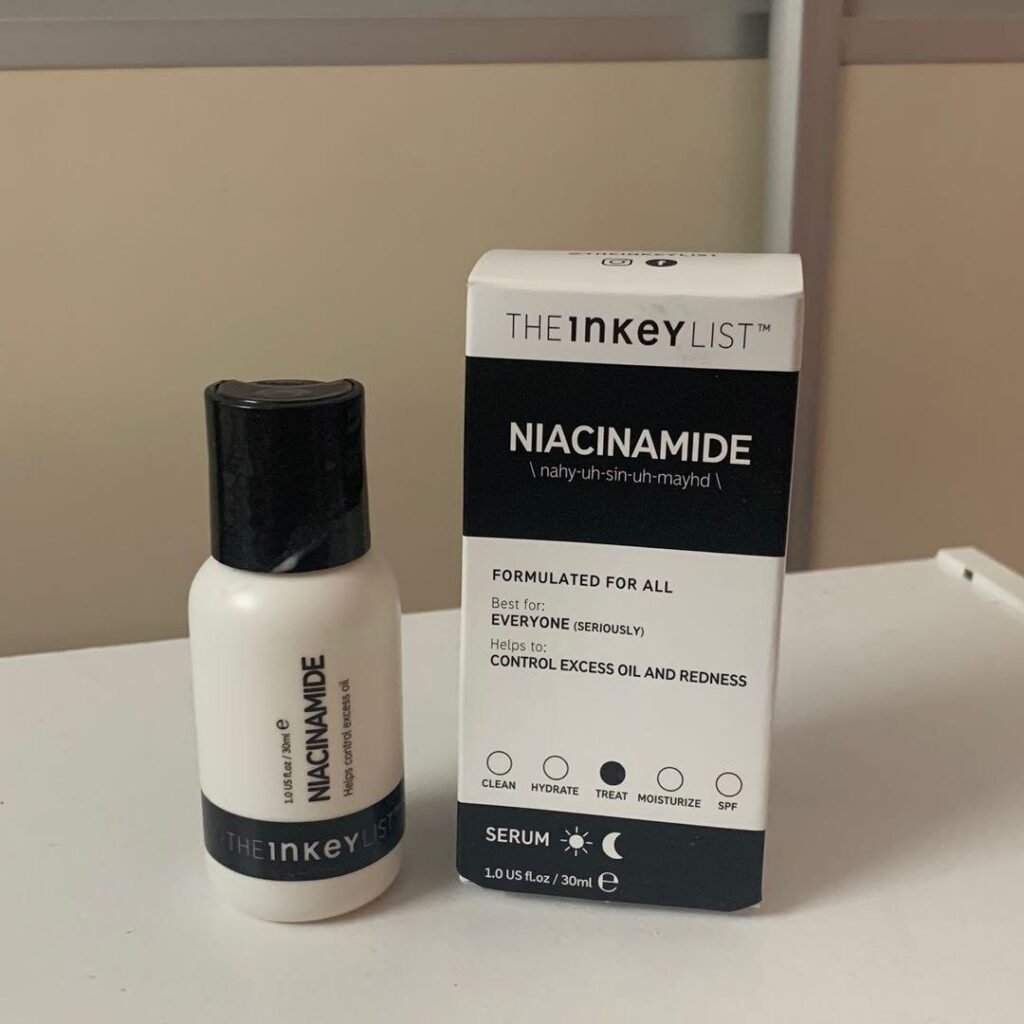
Next up is The Ordinary, which is ten percent niacinamide with one percent zinc, and I appreciate the one percent zinc because that’s actually almost like an anti-inflammatory to the 10% inflammatory dose of niacinamide. However, one downside is its slightly milky texture. When rubbed in thoroughly, it tends to leave a whitish film and feels tacky on the skin, so it’s not my favorite one.. While it boasts a high concentration of vitamin, it’s worth noting that higher concentration doesn’t necessarily equate to better results.

Moving on to Paula’s Choice, known for their quality skincare products and I love Paula’s Choice’s products. Their offering is a booster with a ten percent concentration, priced at around 44 dollars. One commendable aspect is the inclusion of panthenol, also known as vitamin B5, which helps in reducing trans epidermal water loss. This addition complements the ceramides present in the product. While it’s a well-thought-out formulation, I don’t think the high concentration of ten percent might be necessary for everyone’s skin needs.
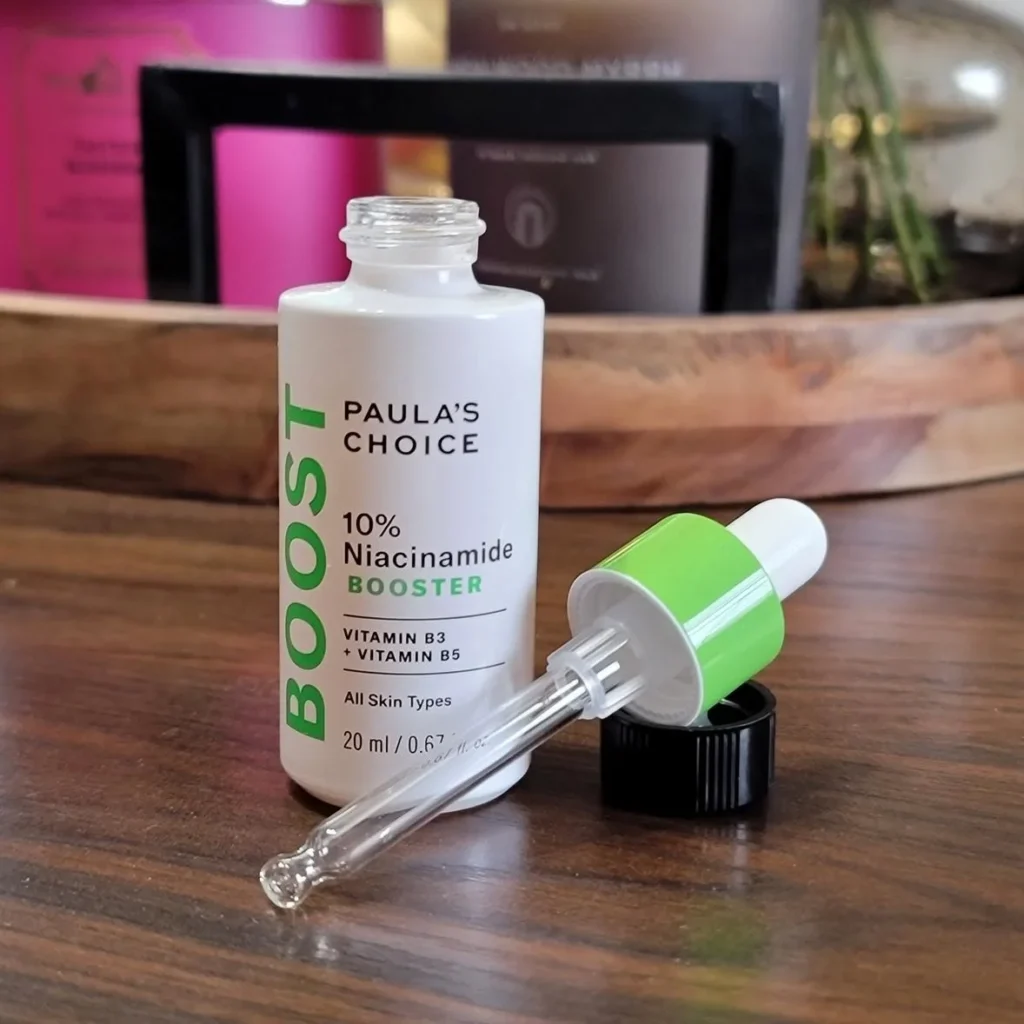
Moving on to products which I think have merit because they are within the five percent range of niacinamide.
I like Glossier’s Super Pure serum , it has niacinamide and zinc and this is at five percent. I think they did a great job with this particular product (some of their other products I’m not huge fans of) It doesn’t leave any sticky feeling after application, which is great.

I quite liked Alpha H’s vitamin B tripeptide or copper tripeptide niacinamide. Niacinamide, also known as vitamin B, is a key ingredient here, combined with one percent panthenol. This blend is aimed at reducing trans epidermal water loss, similar to Paula’s Choice booster but with a milder five percent concentration instead of ten percent. It’s very light on the skin, although it does contain dye, which might not appeal to everyone. However, I personally find it visually pleasing. Another plus is its smooth application – it glides on effortlessly. However, the scent isn’t my favorite; it has a somewhat unusual aroma.
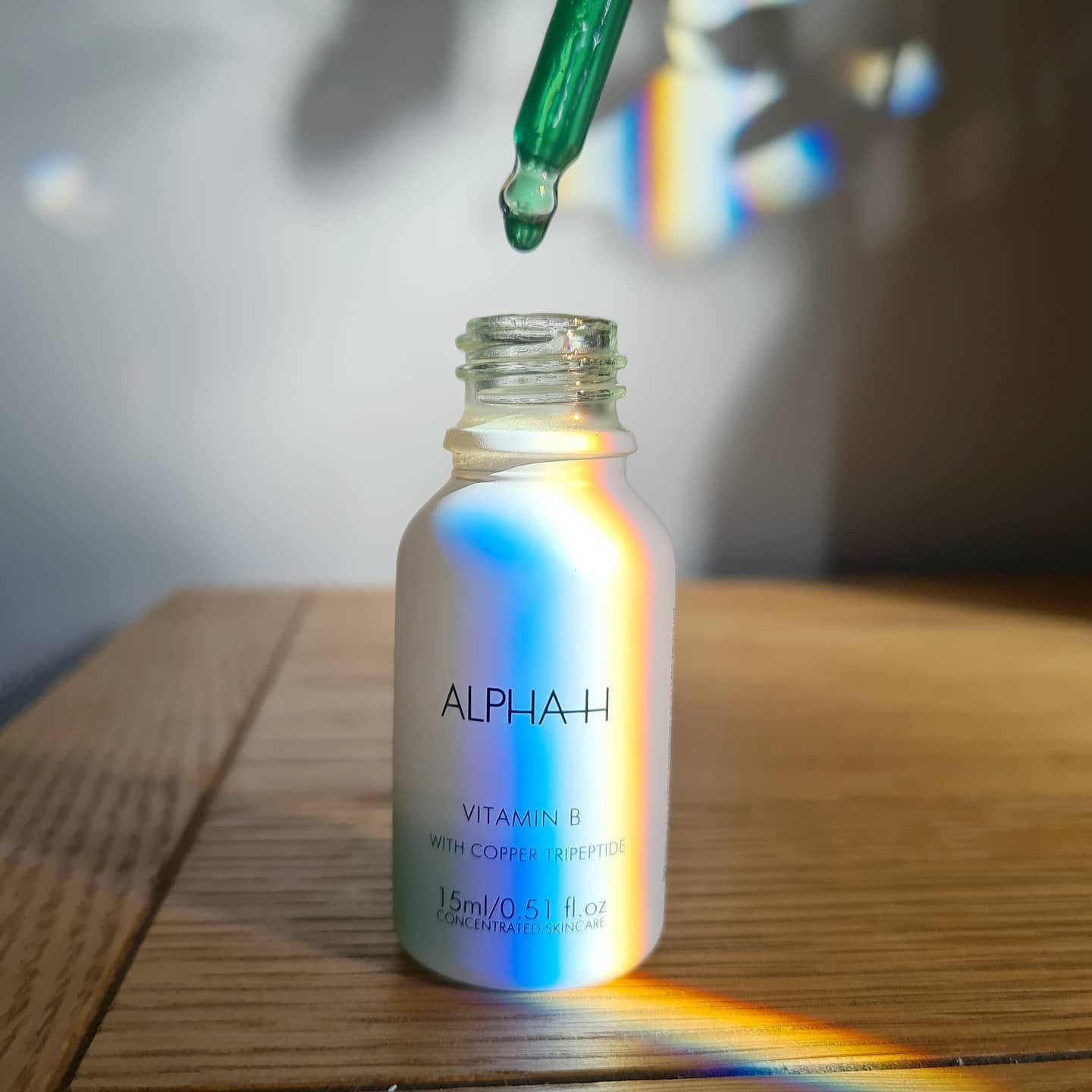
Moving on to SkinCeuticals Metacell Renewal B. Now, this one’s expensive, retailing for a whopping 112 dollars. But I like this one because it has five percent niacinamide as well as a tripeptide concentrate in a glycerin base, making it extremely hydrating. So, you can almost use this as a very lightweight moisturizer, especially in hot tropical environments.If you wear a mask all day and don’t want a heavy moisturizer causing too much sweat under the mask, or if you live in a hot and humid area, this product is perfect. It’s a lightweight, hydrating moisturizer that’s like getting two products in one.
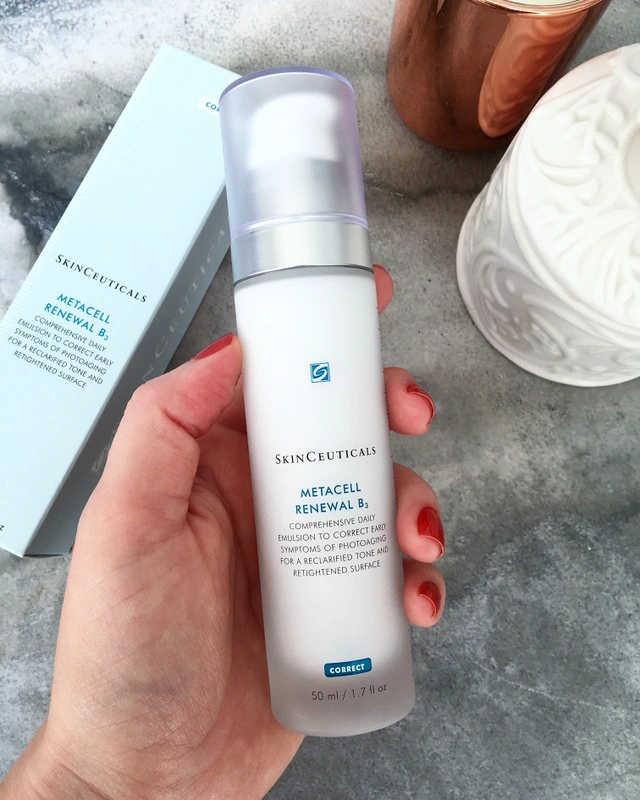
Elta MD offers a PM therapy moisturizer priced at $35. It’s a standalone moisturizer containing niacinamide, around five percent, along with antioxidants. I’ve personally tried it, but I found it had a slightly chalky feel on my skin. However, many people swear by Elta MD products; my fiancé often recommends them to his patients. Personally, I feel like it sits on my skin rather than being fully absorbed. If you’re using this product, I’d suggest starting with once a day to see how your skin reacts. Apply it after cleansing and using any serums. If you’re using another moisturizer, you can use this one as the final step. If you need a thicker moisturizer, layer it on top.

The bottom line
I hope this article has been helpful to you, So niacinamide is like the star of skincare, making big waves since 2020 and still going strong. Even though it’s been around for a while, the key thing to remember is that less is more when using niacinamide.
Plus, if you take it as a supplement, it can help lower your chances of getting certain skin cancers. So, whether you apply it on your skin or take it internally, its antioxidant effects are super beneficial.
My readers’ feedback matters to me. If you have any questions or thoughts, please leave a comment below.

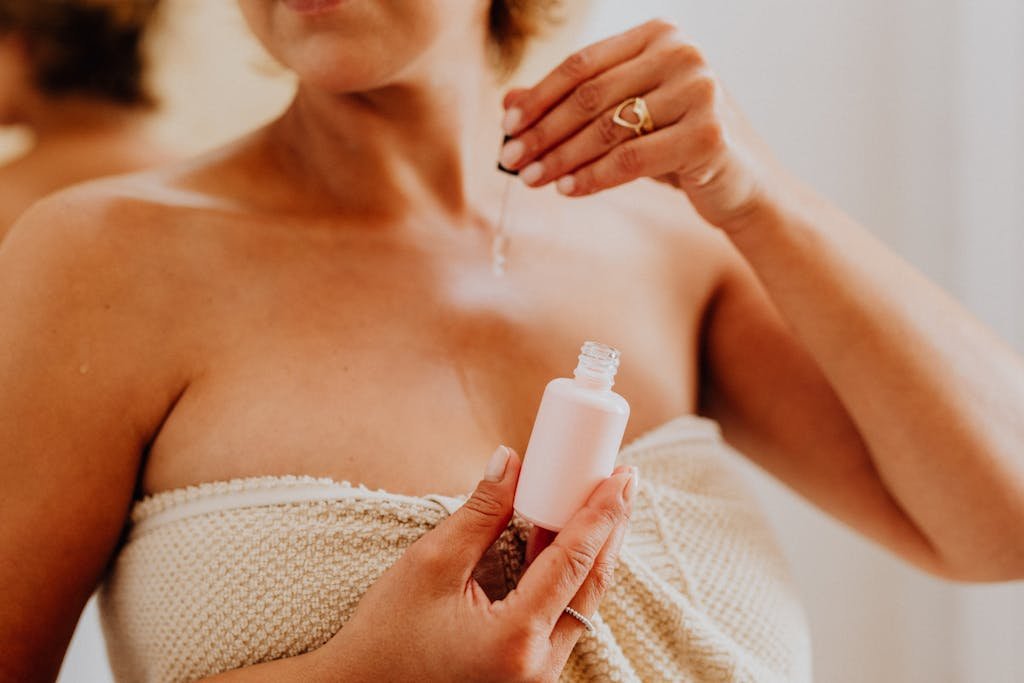
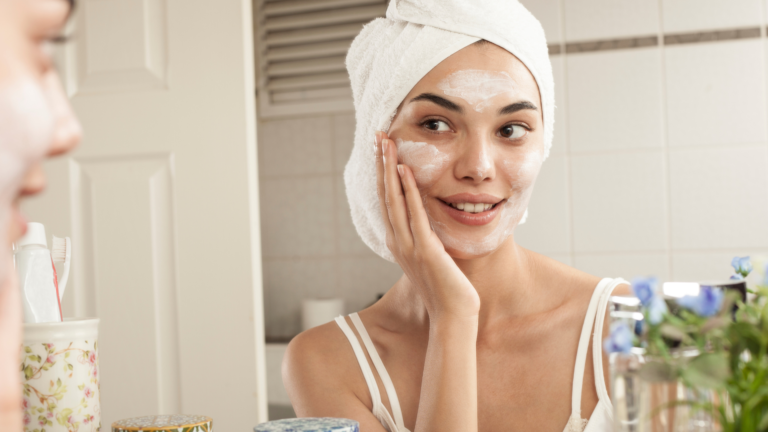
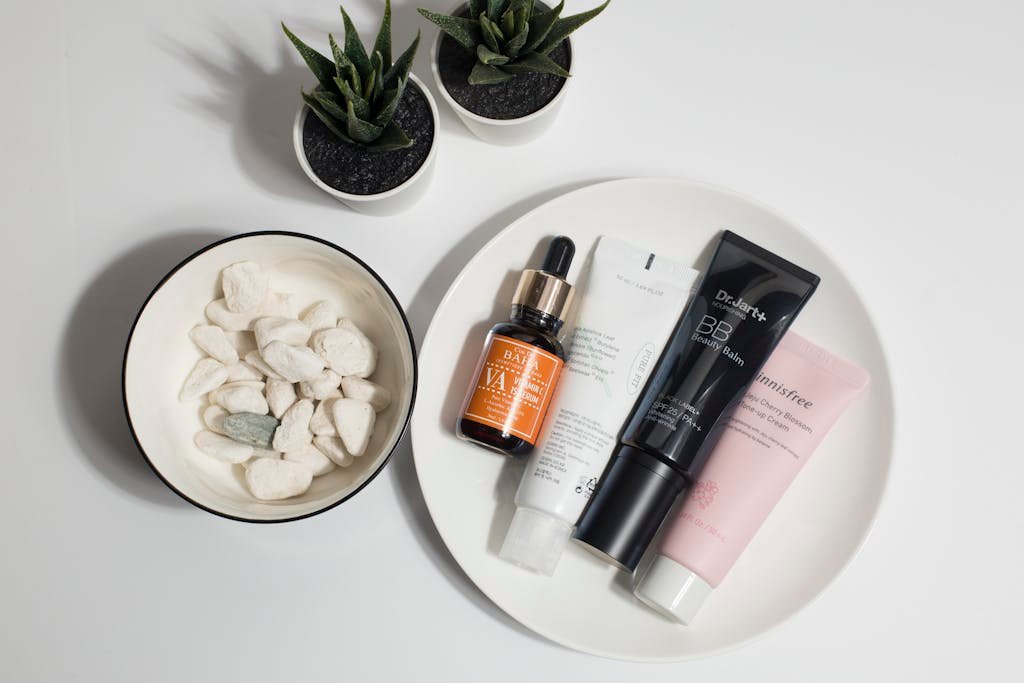


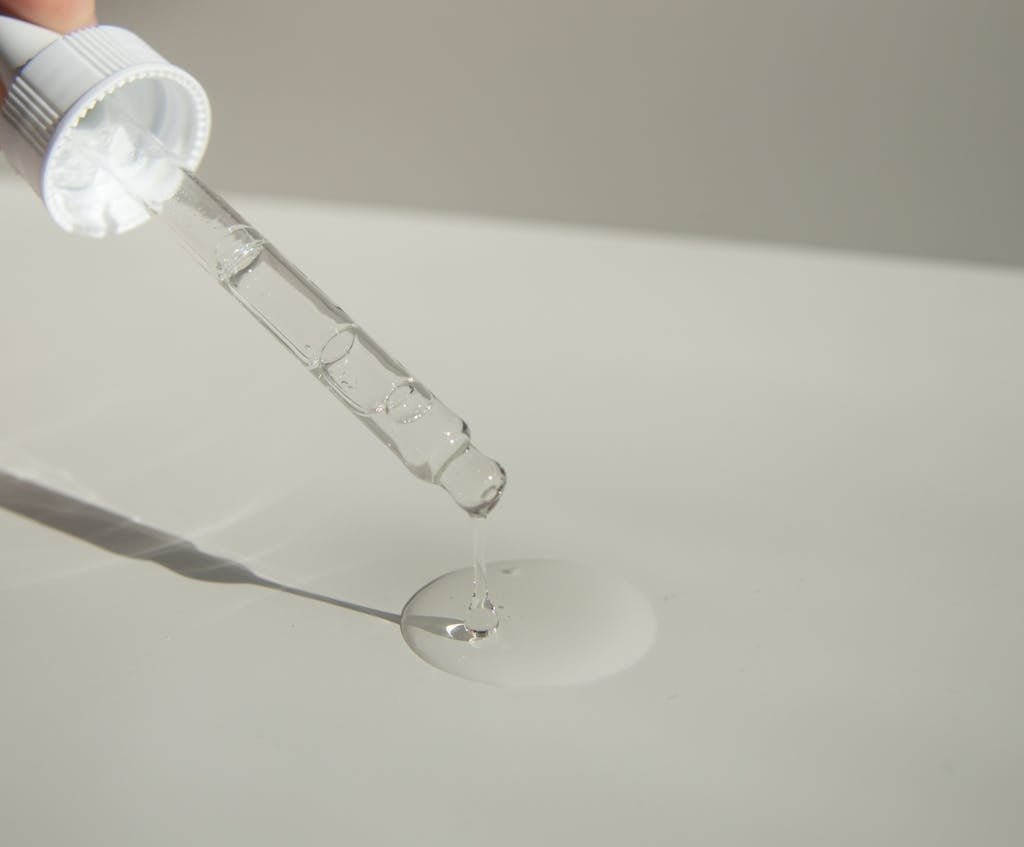
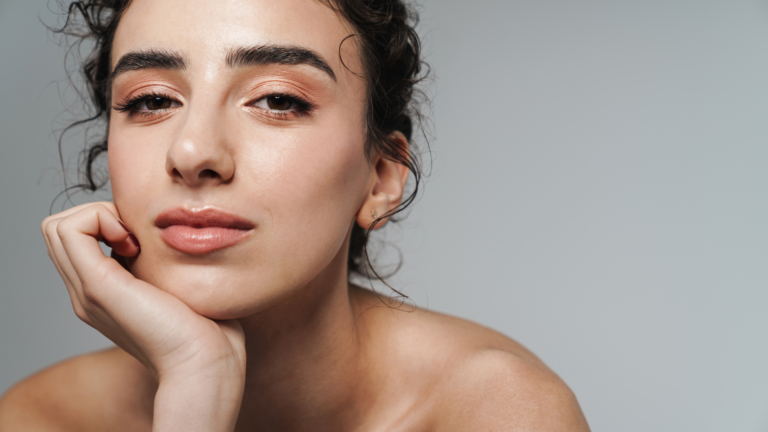
One Comment